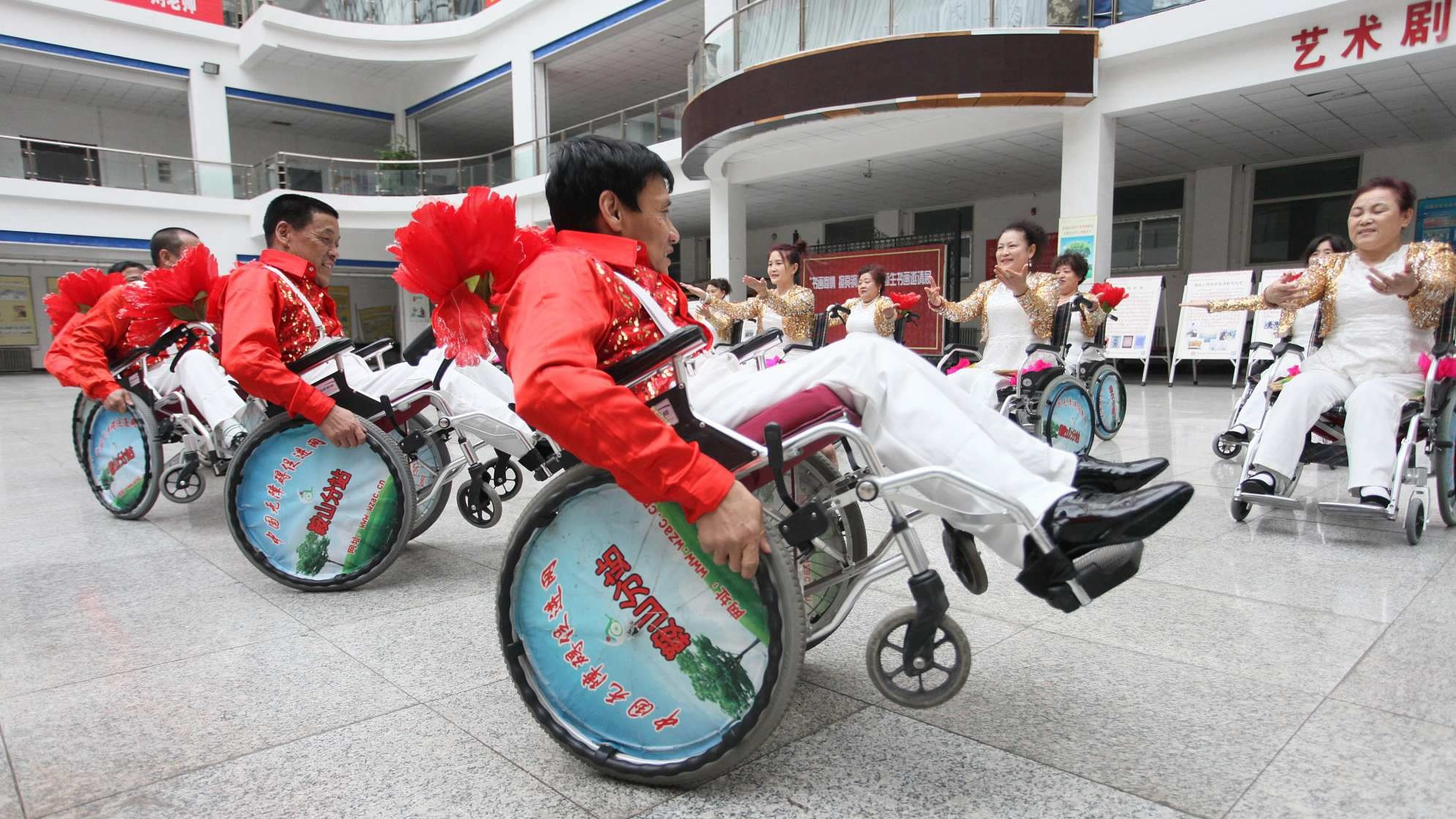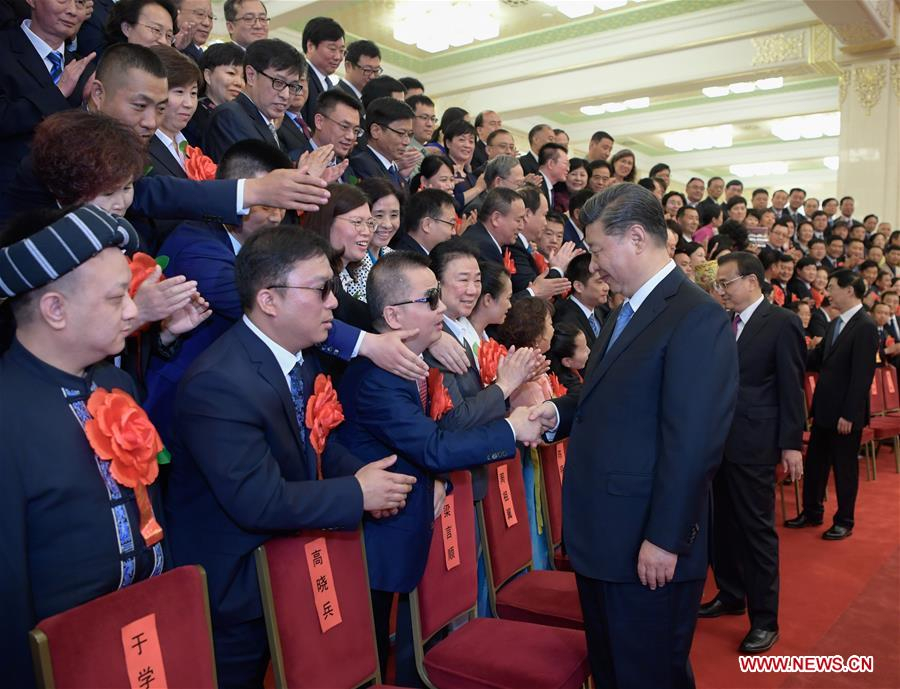
Wheelchair-bound dancers in northeast China's Liaoning Province in 2016. /VCG Photo
Wheelchair-bound dancers in northeast China's Liaoning Province in 2016. /VCG Photo
Editor's note: Jin Yi is the director of China Disability Research Society. The article reflects the author's opinions, and not necessarily the views of CGTN.
As early as 1984, Deng Pufang, the eldest son of former Chinese leader Deng Xiaoping, along with his peers, established the China Foundation for Disabled Persons, which first intended to raise fund to set up a rehabilitation center for disabled people.
Just over four years later, the China Disabled Persons' Federation (CDPF) started its operations, playing a leading role in the undertakings for disabled people in the country. The Law of the People's Republic of China on the Protection of Disabled Persons, published in 1991 and amended in 2008, was an important milestone marking the beginning of a new era for the cause of disabled people.
China now has a population of 85 million people with disabilities. The figure might be doubled by the broader criteria applied in advanced countries. The conditions for disabled people in China have improved dramatically and their protection has witnessed considerable progress, which has been broadly recognized by the international community.
In general, there are three factors contributing to the success: Deng Xiaoping's reform and opening-up, the support of all sectors of society, and disabled people's awareness of their legal rights pushed by Deng Pufang.
By 2018, over 2,600 legal aid centers and 2,600 service windows for persons with disabilities had been set up across China. From 2013 to 2017, the fiscal allocations from all levels of the government for persons with disabilities amounted to over 180 billion yuan (25.6 billion U.S. dollars), up by 123 percent over five years.

Chinese President Xi Jinping meets with representatives attending a ceremony commending role models with disabilities and those who have made outstanding contributions in helping disabled persons, at the Great Hall of the People in Beijing, capital of China, May 16, 2019. /VCG Photo
Chinese President Xi Jinping meets with representatives attending a ceremony commending role models with disabilities and those who have made outstanding contributions in helping disabled persons, at the Great Hall of the People in Beijing, capital of China, May 16, 2019. /VCG Photo
The forms of the employment of persons with disabilities are varied. Steady progress has been made in reserving a certain proportion of employment positions, centralized employment, and self-employment for persons with disabilities. By 2018, the employment figure of people with certified disabilities had grown to 9.48 million.
Still, there is no denying that China's economy is experiencing the adverse effects of international trade protectionism. On account of that, medical expenses will become more costly for those badly in need of immediate rehabilitation and training after injury or disease. More disabled workers will be laid off in the face of a sharply shrinking foreign and domestic market.
The blind masseuses, whose occupation was legalized only two years ago by the Traditional Chinese Medicine Law, will lose their patrons who are as generous as they used to be. This list could go on and on. And all these present a health and wealth hazard to disabled people and thus to their social status which is beginning to be improved.
The good news is that new technology is emerging and existing ones are always evolving, both in favor of those with disabilities. For instance, Huawei's 5G technology, the next generation cellular network, is already available in 50 cities in China. People with disabilities can enjoy high-tech conveniences in education and employment as well as online sales in Taobao and Alibaba shops.
With the rapid development of our national economy and improvement of social civilization, the entire social environment for disabled people will surely get upgraded from barrier-free to easily-accessible. Disability inclusion is set to be the norm.
Moreover, disabled people have been improving their capabilities with the support of the society. The International Day of Persons with Disabilities has been annually observed on December 3 around the world since 1992. Hopefully, more and more disabled heroes will stand out, and each and every disabled individual will be in full control of his or her own choices and seek his or her own destiny in the near future.
(If you want to contribute and have specific expertise, please contact us at opinions@cgtn.com.)